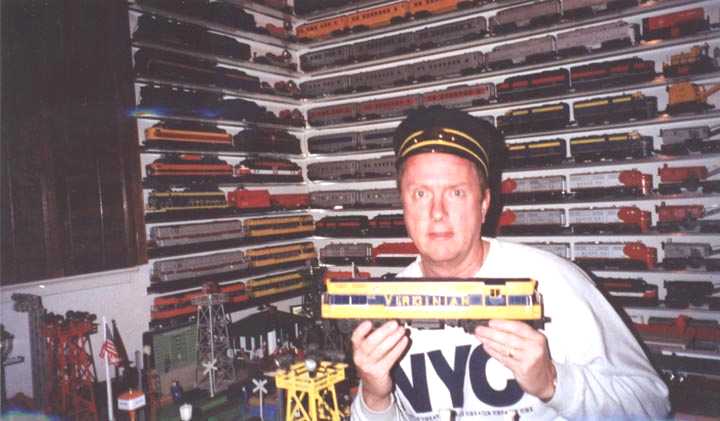My First Train
By Mark Boyd
In 1961 as an 11-year-old boy, we lived in Oakland California and I spent most of my paper route money on trains, which was about $20 a month. Back then it was mostly scenery and building supplies to keep my two 4X6 table top plywood frames filled with 027 track, an old prewar 224 Lionel locomotive and a No. 60 trolley, with an 1862 General set, and a pair of 1122 switches.
I thought my layout was an empire, but every week I rode my bike 3 and one half miles to Lee’s Train Service on Piedmont Avenue in Oakland. Little did I know that Lee’s was one of the oldest Lionel Service Stations on the west coast. All I knew was that they were a real train store! They didn’t stock only for the holidays like most retailers I had experienced. They had trains all year round, old and new.
Customers brought their old trains in to the store for repair or to cash them in as their families got older, which created a great place to see trains that were no longer available from Lionel. The owners of the store were Dave and Peggy White and they constantly complained about the quality and depth of production that Lionel was producing in the 1960’s that made the older trains seem so much more desirable.
One Saturday during October I rode over to Lee’s Trains on my bike (about a 45 minute ride) and when I walked in I stopped short. I saw the biggest locomotive I had ever witnessed. It was a beautiful blue and yellow 2331 Virginian with chrome railings. It was longer than any other locomotive I had ever seen.
I really wanted it, but the $50 price tag discouraged this 11-year-old boy who only earned about $20 a month. I rode back home taking more than an hour and a half to ride the long trip as I day-dreamed of what it would be like to own such a monstrous locomotive. Little did I know that it would never negotiate my 027 curves. Nevertheless, it would have looked great just sitting there.
I told my parents about it and anxiously waited until the following Saturday to ride back to Lee’s to see the locomotive again. By the time Wednesday came, I was just too anxious and so I took an afternoon trip after school over to the store with the plan of spending only a few minutes so that I could get back home by dark. As I walked in the door, I noticed the locomotive was gone. I inquired and Peggy told me that it had been sold. Boy, was I disappointed. It was an even longer ride back home and it was dark by the time I arrived.
I told my parents about the disappointment and they consoled me as best they could. I only hoped that now that I had seen a 2331 that I would be on the lookout for another. Even at the young age of 11 years old I aspired to be a collector. I had no clue that there was such a thing as the “TCA” in 1961. I heard my parents speak of “collectors” but they sounded like scoundrels to a young boy’s ears (like the “tax collector”). I didn’t care; I wanted to be one if it meant I could have the trains I wanted. I would be an “honest” collector!
This definition of a collector was derived more from known antique dealers of that day who paid as little as possible for valuable items, more than it was from any known train collectors of that time. Little did I know that being a train collector could be an honorable thing.
Two months later while opening my Christmas presents I was surprised to find that my father had phoned the train store that very first day to set the Virginian 2331 aside and they had made installment payments to purchase the locomotive over the next few weeks. $50 in 1961 was a substantial amount of money for a family of 4 with one income to pay for a discretionary item like a toy train locomotive.
That same Christmas they supplied me with several dozen pieces of Super O track which allowed me to replace my 027 track and I was able to operate my 2331! I also got a ZW transformer!
Years later, my father told me that it really bothered him to pay more money in 1961 for a toy locomotive that had sold for $42.50 just six years earlier. He couldn’t figure out why a used toy would cost more money after it was used and played with some six years after it was sold as “new”. He thought he was getting ripped off at the time. He now realizes the investment he made both financially and in the future aspirations of his son paid off.
Mark C. Boyd
Secretary, Norcal TCA







